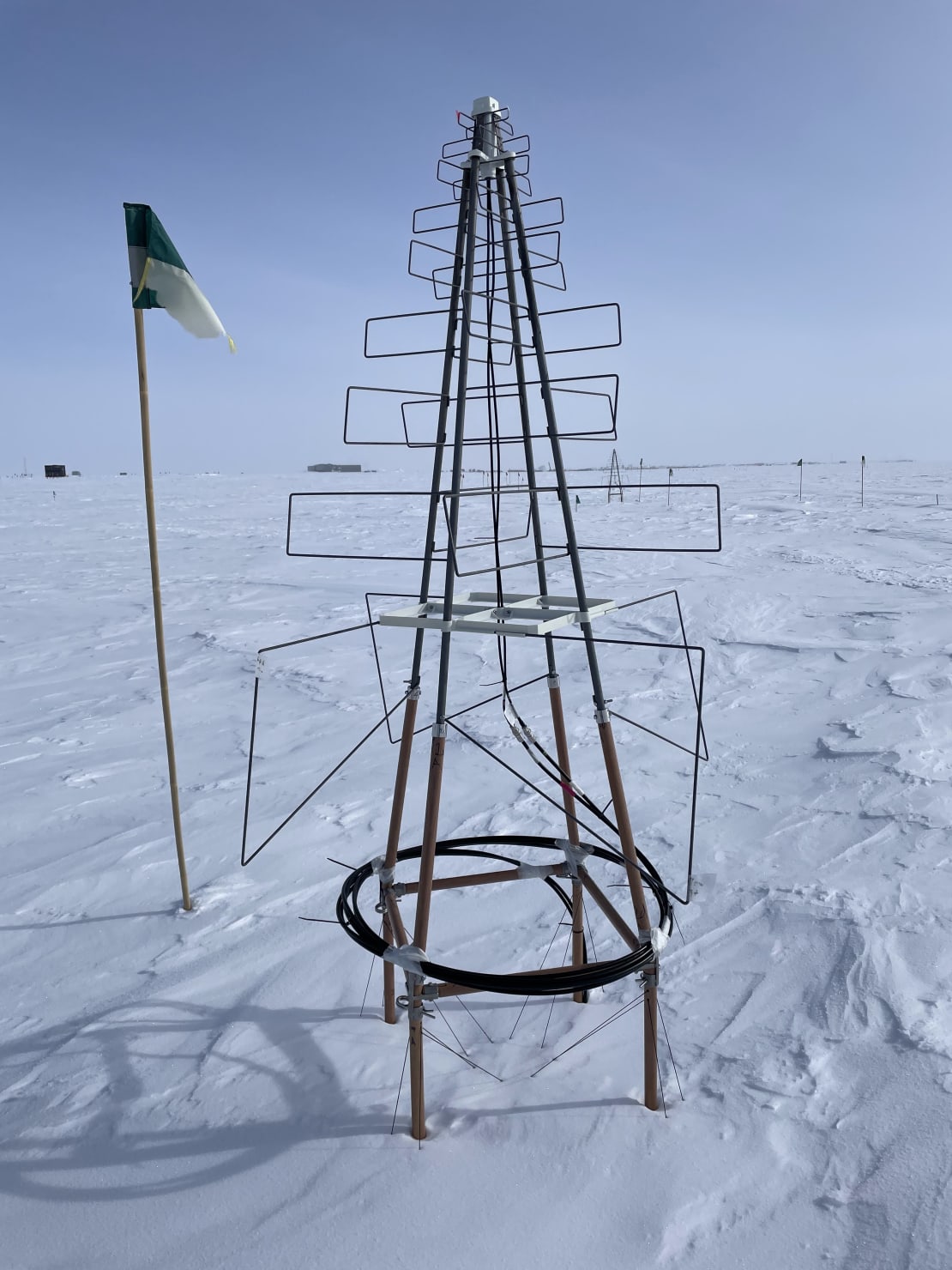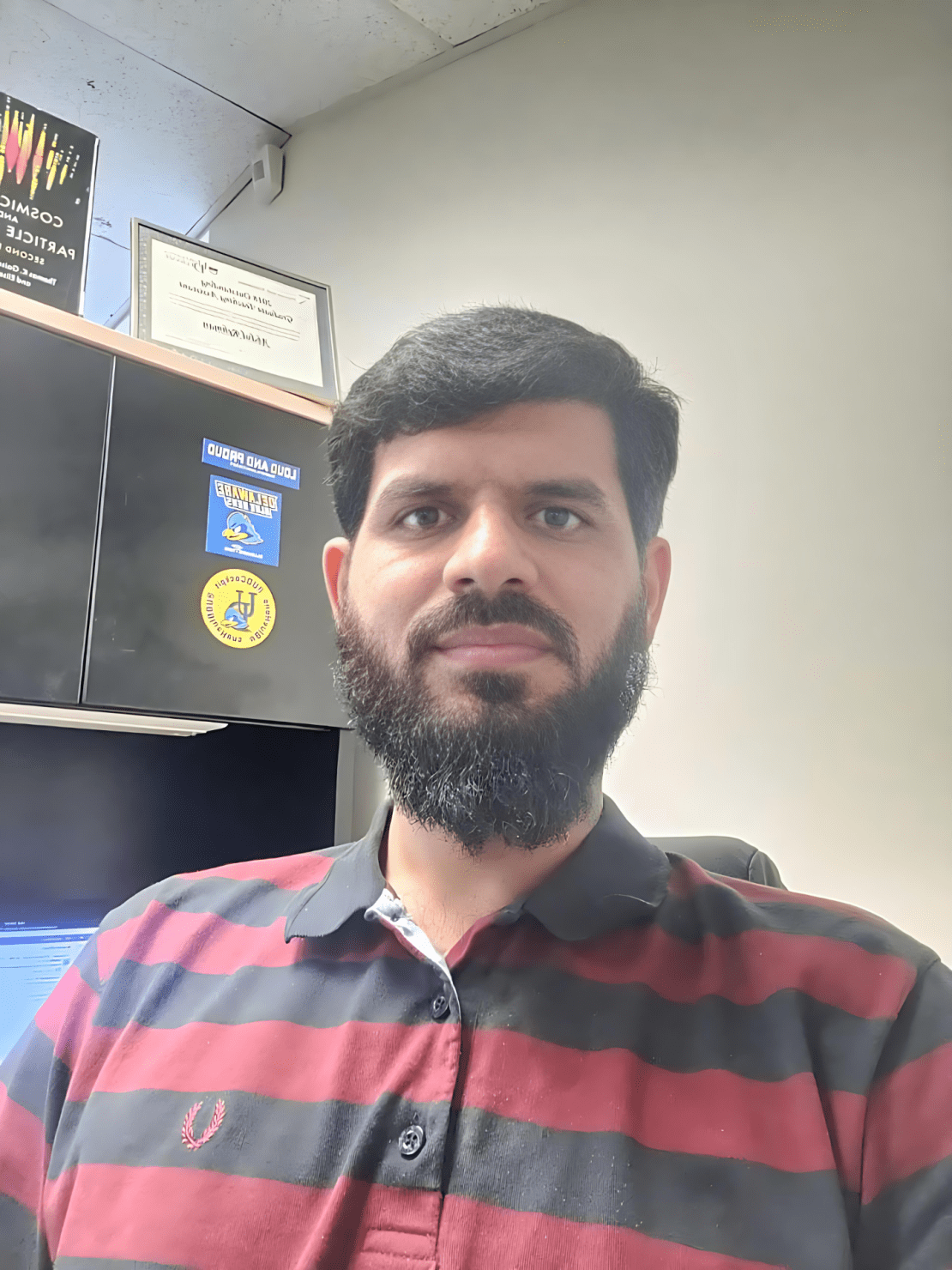When high-energy particles called cosmic rays collide with Earth’s atmosphere, they create cascades of particles or air showers that emit faint radio signals. Because they are so faint, they are often drowned out by background signals from natural sources (the universe) and man-made sources (radio transmitters), making it difficult to discern signals originating from a cosmic-ray event. The accurate detection of radio emission can be key to determining the properties of cosmic-ray showers, such as the energy and depth of the electromagnetic component.
To address this challenge, the IceCube Collaboration used a machine learning tool called convolutional neural networks (CNNs) to reduce the background noise and clean contaminated radio signals in order to recover the original cosmic-ray pulse. The CNNs were applied to air-shower data triggered by scintillation detectors of the prototype station for the enhancement of IceTop, IceCube’s surface array at the South Pole. Compared to a traditional technique that utilizes a signal-to-noise ratio, the CNN-based method was able to identify about five times more events while significantly reducing the rate of false-positive identifications. The results are presented in a study submitted to Physical Review D.


For the study, researchers developed two CNNs: one that was trained to recognize either a radio signal or background noise from a recorded event (“Classifier”) and another that cleaned up the recorded signal (“Denoiser”).
“To train these networks, we combined simulated radio signals from cosmic-ray air showers with real background noise recorded by the three radio antennas at the South Pole,” explains Abdul Rehman, who was the main analyzer of the study while a PhD student at the University of Delaware. “Once trained, we applied the networks to actual air-shower data measured by these antennas to identify useful radio events.”
The improved identification of radio events means that a lower detection threshold can be used for radio detection, ultimately allowing the identification of more cosmic-ray events. Future analyses will contain a richer dataset of coincident events between the radio antennas and the IceTop detectors, allowing researchers to address key questions in particle physics related to cosmic rays, such as the muon puzzle.



“Our results show that machine learning, especially CNNs, can play a major role in improving radio detection of cosmic rays,” says Alan Coleman, who collaborated on the study while a postdoctoral researcher at the University of Delaware. Frank Schroeder, assistant professor at the University of Delaware, adds, “These tools can enhance the sensitivity of current experiments like IceCube and support the goals of future projects such as IceCube-Gen2, the radio upgrade of the Pierre Auger Observatory, the large-scale GRAND array, and NASA’s POEMMA balloon-borne radio mission.”
+ info “Identification and Denoising of Radio Signals from Cosmic-Ray Air Showers using Convolutional Neural Networks,” IceCube Collaboration: R. Abbasi et al. Submitted to Physical Review D. arxiv.org/abs/2508.14711